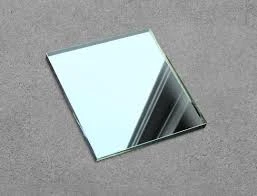

The Allure of Dark Reflective Glass A Modern Architectural Marvel
In the ever-evolving landscape of contemporary architecture and design, dark reflective glass has emerged as a striking element that marries aesthetics with functionality. This material, characterized by its sleek, glossy finish and ability to reflect light, has captured the imagination of architects and designers alike. As cities expand and develop, the use of dark reflective glass is increasingly becoming synonymous with modernity, sophistication, and sustainability.
One of the most appealing features of dark reflective glass is its ability to transform urban environments. Buildings clad in this material often exude a sense of elegance and innovation. The reflective surface of the glass beautifully captures the surrounding scenery, creating a stunning visual interplay between the structure and its environment. This dynamic quality not only enhances the architectural grandeur but also allows buildings to blend seamlessly into their surroundings, reducing harsh visual impacts on the skyline. As light changes throughout the day, dark reflective glass structures come alive, shifting in appearance and creating a vibrant tapestry of reflections.
Moreover, the use of dark reflective glass is not just about aesthetics; it also offers significant functional benefits. One of the primary advantages is its ability to provide shade and reduce glare. In urban areas where sunlight can be overwhelming, dark reflective glass minimizes the intrusion of direct light, creating more comfortable indoor environments. By controlling solar gain, buildings can maintain cooler temperatures, thereby reducing reliance on air conditioning and contributing to energy efficiency. This property aligns with the growing trend toward sustainable architecture, as it enables the design of smart buildings that are both energy-efficient and environmentally friendly.

Another crucial aspect of dark reflective glass is its capacity for privacy. In a world where urban density continues to rise, the need for personal space is more important than ever. Dark reflective glass offers an effective solution, allowing natural light to enter while obstructing views from the outside. This characteristic makes it an ideal choice for residential and commercial buildings alike, where privacy can often be a concern. By incorporating this material, designers can create inviting, well-lit spaces that remain shielded from the curious gaze of passersby.
The durability of dark reflective glass further enhances its appeal. Subject to rigorous testing and engineered to withstand various environmental conditions, this material is both resilient and long-lasting. Whether it’s a high-rise office building or a luxurious condominium, dark reflective glass provides a maintenance-friendly solution that stands the test of time. Its stain-resistant surface and ease of cleaning also make it a pragmatic choice for architects aiming to create low-maintenance structures.
In conclusion, dark reflective glass encapsulates a unique blend of beauty, functionality, and sustainability. As architects continue to push the boundaries of design, this material represents a pivotal shift toward more innovative, energy-efficient buildings that do not compromise on style. With its stunning aesthetic qualities, ability to enhance energy efficiency, promote privacy, and offer durability, dark reflective glass is poised to remain a staple in modern architecture. As we look toward the future, it is evident that this glass will continue to play a crucial role in shaping the skylines of our cities, creating spaces that are as inspiring as they are functional.